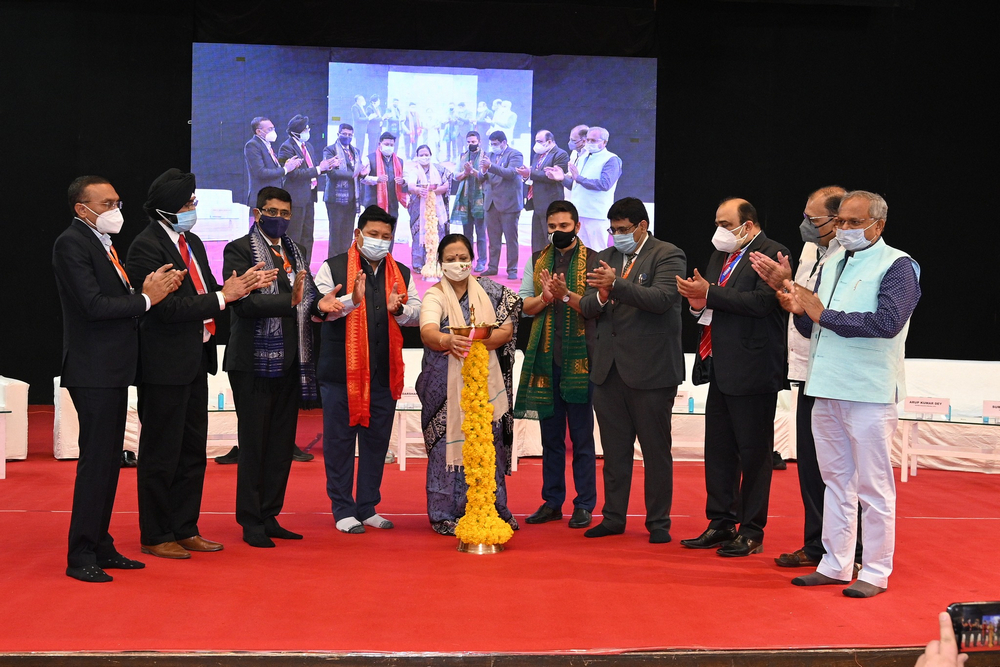Bangladesh, the second-largest RMG exporter in the world, largely depends on cotton for its textile production. But in the backward linkage, sourcing of cotton has always been a problem for the country. Sadly enough, Bangladesh only produces 4 percent of the annual demand for 10 million bales of cotton. Finding no way, the rest 96% is being imported from the international market with exorbitant prices.
In this painful situation, Bandarban is appearing as a ray of hope as the tobacco farmers are being interested in cultivating more and more cotton, opening up an opportunity to source 2150 tons of cotton in FY 2020-21 directly from there. Though it is still a nominal amount of cotton for the export-oriented yarn manufacturing industries, it is a great trend taking place in the hilly regions.

Previously dominated by tobacco farming, now Bandarban district is facing a radical change as there can be seen a positive trend of the farmers being more interested in cultivating cotton. These farmers are diverting their routes from tobacco cultivation to cotton because of getting more profit with less cost and hardship.
Now cotton is being extracted from different lands of the district including Meghla, Chimbuk, Charui Para, Lemujhiri, Balaghata Jaymohan Para, Mongpru Chhara. The farmers are extremely satisfied with the good yield both from hybrid and local cotton.
According to the Cotton Development Board, Bandarban Zone, cotton is cultivated in 6175 hectares of land in Bandarban in the fiscal year 2019-20 where 2088 tonnes of cotton is produced.
Meanwhile, in the financial year 2020-21, cotton has been cultivated in 6200 hectares of land which demonstrates the addition of 25 hectares. According to their calculation, the authorities expect to produce 2150 tonnes of cotton which is 62 tonnes more than previous. According to the experts, this positive trend of cotton cultivation will increase.
At present, there are 6,000 cotton farmers in Bandarban where mainly hill cotton and plain cotton are being cultivated. Last year the price of cotton was 57,500 taka per tonne and this year the price of cotton is 65,000 taka per ton.
When asked how the increase in cotton cultivation in Bandarban can help Bangladesh, Md. Bashar Uddin, the Lecturer of the Department of Yarn Engineering of Bangladesh University of Textiles (BUTEX) said, “We know that hill tract area where water doesn’t stand is suitable for cotton cultivation. Even if a nominal percentage of cotton demand can be fulfilled from there, it can be very positive for us.”
“As cotton is an annual plant, we need to order them from foreign countries at a specific time, at a specific quantity. As demand can change in a cotton mill, if we accidentally order less than our demand, then we need to purchase the extra cotton at a much higher price. So, if we could increase quality cotton cultivation in our country, the spinning mills could order sufficient cotton in an advance without the risk of purchasing extra cotton in an emergency with a higher price.” Bashar added.
He also said, “Moreover, the people of the hilly areas are being independent by cotton cultivation. If they can produce sufficient cotton with good quality, the spinning mills will compete to buy from them.”
“At present, there are spinning mills which are cultivating cotton in the country with their funds. For example Square has agreements in Jessore and Kushtia areas,” Bashar added.
In the latest report of the US Department of Agriculture (USDA) on the Cotton and Products Update on Bangladesh, it said cotton is cultivated in 20-22 districts of Bangladesh, covering only 0.55 percent of the total cultivable land of 81 lakh hectares.
We have room to increase cotton cultivation and support our spinning mills. The Cotton Development Board set a goal of domestically producing two million bales of cotton by 2041, which can be achieved by using only 2,00,000 hectares of land.
(Courtesy: Textile Today)






